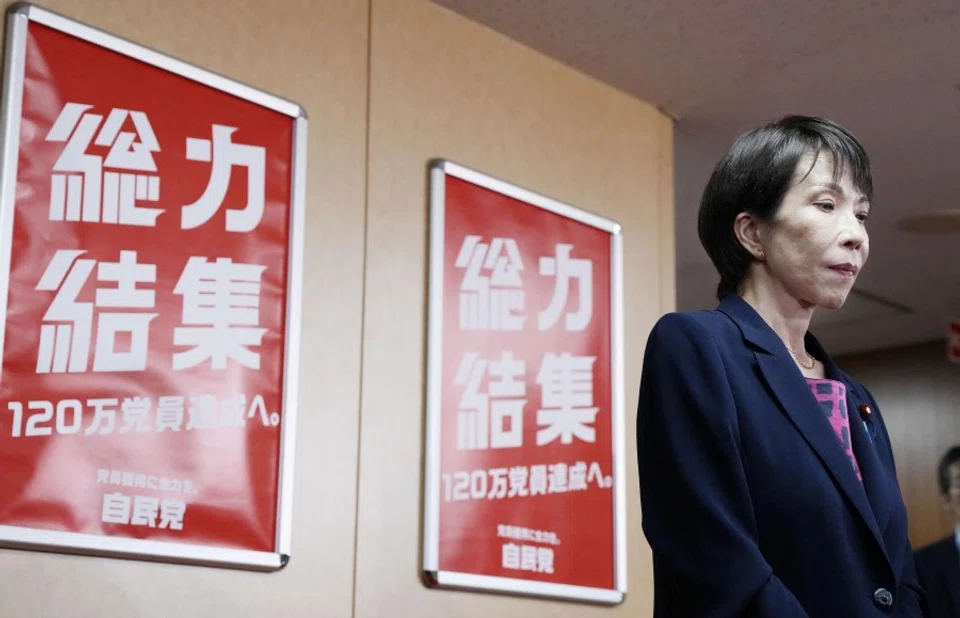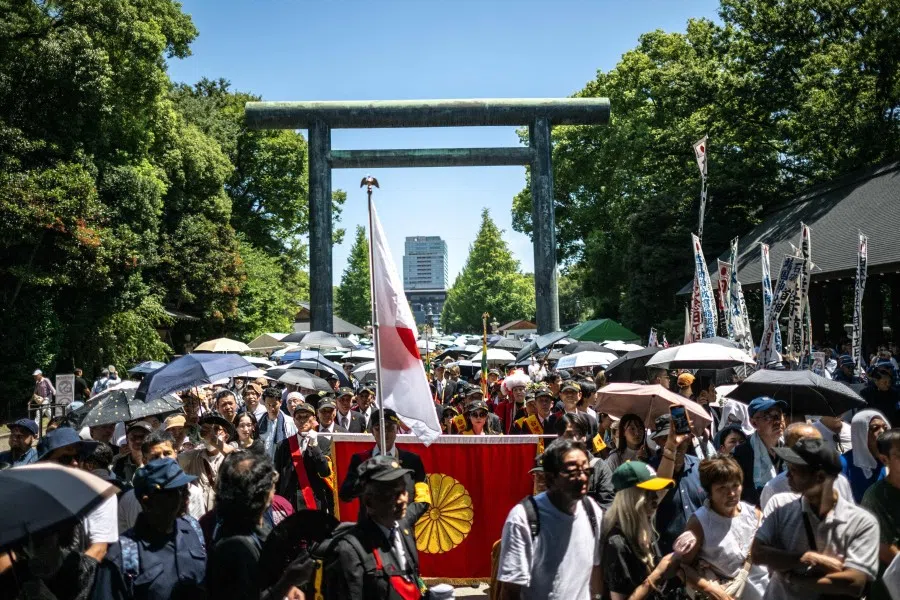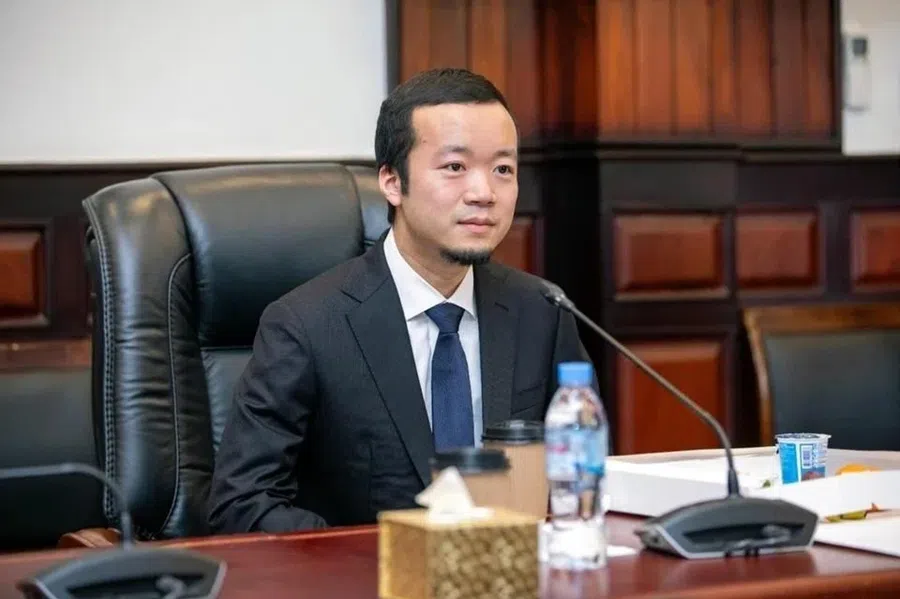Takaichi may make history — but can she shape it?
With Sanae Takaichi possibly becoming Japan’s first female prime minister, what domestic and international challenges might lie ahead? Researcher John Lim Chuan-Tiong explores what not only she — but any Japanese leader — will need to navigate in foreign policy, while carefully managing domestic reactions.

The dramatic race for leadership of Japan’s Liberal Democratic Party (LDP) has concluded with Sanae Takaichi emerging as the winner. Often described as the female politician most closely aligned with the legacy of former Prime Minister Shinzo Abe, she now stands on the brink of power as the National Diet prepares to vote for Japan’s next prime minister on 21 October 2025. But her victory is far from a final triumph — it marks the beginning of an uphill battle in a political era defined by domestic gridlock and diplomatic turbulence.
Complicating her ascent, the LDP’s coalition partner of 26 years, Komeito, announced less than a week later that it would withdraw from the alliance and refuse to support her candidacy for prime minister. Whoever takes the top job will face a fraught path ahead — and for Takaichi, every step forward now carries the weight of both opportunity and uncertainty.
... Takaichi’s strong alignment with US Secretary of State Marco Rubio’s hardline stance on China and Indo-Pacific security may help her regain Washington’s confidence.
Takaichi’s ascent has not been easy. With shifting factional alignments within the LDP, it no longer commands a majority in either the lower or upper house of the National Diet. Domestically in Japan, inflation has persisted, and the June consumer price index has increased by 3.1% year-on-year. The domestic fiscal deficit approaches 260% of GDP, with the hollowing out of Japan’s labour force by its declining birth rate.
Internationally, US-China rivalry is intensifying, and the Taiwan Strait situation is increasingly tense. To prove that she is not only the torchbearer of Abe’s political legacy but also a political leader capable of ushering in a new era, Takaichi must concurrently deal with these difficulties.
US relations: delicate balance between alliance and autonomy
Takaichi’s top priority in foreign relations will be to repair Japan-US relations. Washington’s confidence in Japan has been eroded by the previous Prime Minister Shigeru Ishiba, who has maintained a distance from the Trump administration. In contrast, Takaichi’s strong alignment with US Secretary of State Marco Rubio’s hardline stance on China and Indo-Pacific security may help her regain Washington’s confidence.
The US expects Takaichi to position Japan as the hub of the first island chain in its Indo-Pacific island chain strategy. According to the US Department of War’s 2024 report, Japan will host three new shared facilities with US forces over the next five years, including missile defence and long-range strike systems at the Ryukyu Islands. Takaichi herself has repeatedly advocated that Japan’s Self-Defense Forces should have counterstrike capabilities, an idea that neatly fits into the US strategy of forward deterrence.

Economic security has always been Takaichi’s focus. When she was the LDP’s Minister of State for Economic Security, she played a major role in drafting and tightening the enforcement of the Economic Security Promotion Act. However, Japan continues to depend heavily on trade with China, at 19.7% of total trade, far exceeding the 13.5% with the US. This compels Takaichi to seek a compromise between the “pro-US, anti-China ideology” and the “economic reality of dependence on China”.
Japan remains the cornerstone of the Trump 2.0 administration’s Indo-Pacific strategy. Takaichi has pledged to continue the late Abe’s vision of a Free and Open Indo-Pacific (FOIP) under US leadership and the expansion of Japan’s regional presence. She has voiced support for the Quadrilateral Security Dialogue (Quad, comprising the US, Japan, India and Australia) and has advocated Japan’s proactive participation in the Five Eyes alliance for sharing intelligence.
Although Takaichi is more aligned in principle with the US, she understands that Japan cannot always operate in Washington’s shadow.
However, the US continues to demand that Japan shoulder more security and economic responsibilities. In the latest budget by Japan’s Ministry of Defense, the 2026 defence budget of 13 trillion yen (US$85.3 billion) has already exceeded 2.1% of Japan’s GDP, which adds structural pressure for a nation sustained by long-term debt. If the Takaichi administration is unable to strike a balance between fiscal reform and defence expansion, it will quickly result in criticisms of “foreign policy overreach amid domestic neglect”.
Although Takaichi is more aligned in principle with the US, she understands that Japan cannot always operate in Washington’s shadow. Maintaining Japan’s diplomatic flexibility amid the uncertainties of Trump 2.0 will test her strategic acumen. Without concrete actions, her emphasis that Japan must independently consider its own security will easily become rhetoric.
China relations: contradiction between history and realpolitik
If Japan’s US relations are a tug-of-war between cooperation and subordination, its China relations embody a contradiction of hostility and dependence. Within the LDP, Takaichi is perceived as one who is most pro-Taiwan and suspicious of China. She has long advocated the China Threat narrative and accused Beijing of undermining the global order. If she becomes prime minister, she is likely to very quickly strengthen coordination of the Japan Coast Guard and the Self-Defense Forces, and emphasise the establishment of a permanent monitoring system around the Senkaku Islands.
Takaichi’s historical stance has made her reconciliation with Beijing almost impossible.
Takaichi’s historical stance has made her reconciliation with Beijing almost impossible. She has repeatedly visited Yasukuni Shrine, and declared at a 2022 LDP leadership meeting that “Yasukuni Shrine is the spiritual basis of Japan”, which drew stern condemnation by the spokesperson of China’s Foreign Ministry. To Beijing, Takaichi represents a continuation of the Abe-style right-wing nationalism and a challenge to postwar reconciliation.

Meanwhile, trade and economic ties between Japan and China are deeply intertwined. China is Japan’s largest trading partner, and Japanese corporations, such as Toyota, Mitsubishi Electric and Canon, are allocating some 40% of their overseas investments in China. Although Takaichi promotes de-risking by supply chain diversification, Japan cannot realistically remove itself entirely from China’s market. Due to this contradiction of political conflict and economic dependence, her China policy must retain room for compromise and manoeuvre.
The interplay of history and realpolitik leaves China-Japan relations on thin ice. If Takaichi pursues an ideologically driven diplomacy, she will risk backlash from the business community and finance bureaucrats. Tilting towards pragmatism will, however, risk accusations by right-wing factions of a betrayal of her convictions. These internal and external struggles are destined to be the prickliest obstacle in her administration’s diplomacy.
Taiwan relations: emotional connection and strategic integration
Relative to her hardline stance on China and cautious approach with the US, Takaichi’s position on Taiwan is clear and resolute. She is not only carrying forward Abe’s core principles of constitutional amendment, military strengthening and a stronger sense of national sovereignty, but has also explicitly included “a Taiwan emergency is a Japan emergency” in her policy blueprint.
... she has included the Taiwan Strait issue in Japan’s core strategic agenda.
While Abe’s post-resignation narrative of a “Taiwan emergency” is mostly a strategic declaration, Takaichi’s circumstances are different. During her Taiwan visit in April 2025, she met with President Lai Ching-te and clearly stated that “by uniting like-minded countries… we can build a stronger network to jointly maintain our security guarantees”, which is beyond diplomatic rhetoric. She further advocated that Japan should build multi-levelled security frameworks with the US, Australia and European democracies instead of relying only on the Japan-US alliance. This implies that she has included the Taiwan Strait issue in Japan’s core strategic agenda.
Takaichi’s Taiwan policy demonstrates both symbolism and pragmatism. On the symbolic front, she frames Taiwan as a partner in shared values, emphasising democracy, human rights and the rule of law. On the pragmatic front, it aims to advance semiconductor cooperation and defence dialogue.

However, Takaichi is aware of the risks to Taiwan-Japan relations. Japan’s long-standing pledge to Beijing that its ties with Taiwan remain at the framework level of “non-official, practical, civilian exchanges” remains unchanged. Aligning too closely with Taipei will risk Beijing seizing upon it as a reason for a diplomatic offensive. Otherwise, a low-key approach may disappoint her supporters. She must find a delicate balance between strategic ambiguity and moral clarity.
Takaichi’s challenge is not only about being hardline but how to sustain Japan’s diplomatic relations.
Sustaining diplomatic relations
Takaichi has an ambitious diplomatic vision for a “values-based Asian order” anchored in the US-Japan alliance, pivoted on Taiwan, and framed within a wider Indo-Pacific strategy. Yet, the gap between the ideal and reality is massive.
First, Japan’s economic strength and fiscal capacity are no longer sufficient to support superpower diplomacy. If Takaichi wants to maintain the Indo-Pacific strategy, Japan must increase foreign aid and military spending. Second, security in East Asia is rapidly changing, with Japan’s Self-Defense Forces strained to the limit by Beijing’s routine military drills in the Taiwan Strait and joint Russia-China naval patrols in the Sea of Japan.
Takaichi’s challenge is not only about being hardline but how to sustain Japan’s diplomatic relations. Can Japan maintain strategic stability with limited resources, and hold its diplomatic course amid shifting domestic opinion? As her foreign policy is destined to be fraught with difficulties, she must find a workable middle ground among Japan’s dependence on the US and its own autonomy, confrontation with and economic dependence on China, as well as emotion and reality regarding Taiwan. While she has inherited Abe’s convictions, she is now in an even more uncertain era.
The expression “a Taiwan emergency is a Japan emergency” can also now work in reverse, that a Japan emergency is also a Taiwan emergency. In this era of an interconnected and volatile Indo-Pacific, Takaichi is not merely Japan’s potential leader but also a test case for the region’s future order. If she can overcome these difficult challenges, Japan may truly welcome a new strategic era. Otherwise, the halo effect of becoming Japan’s first female prime minister will be buried under the weight of reality.
This article was first published in Lianhe Zaobao as “高市早苗外交之路铺满荆棘”.





